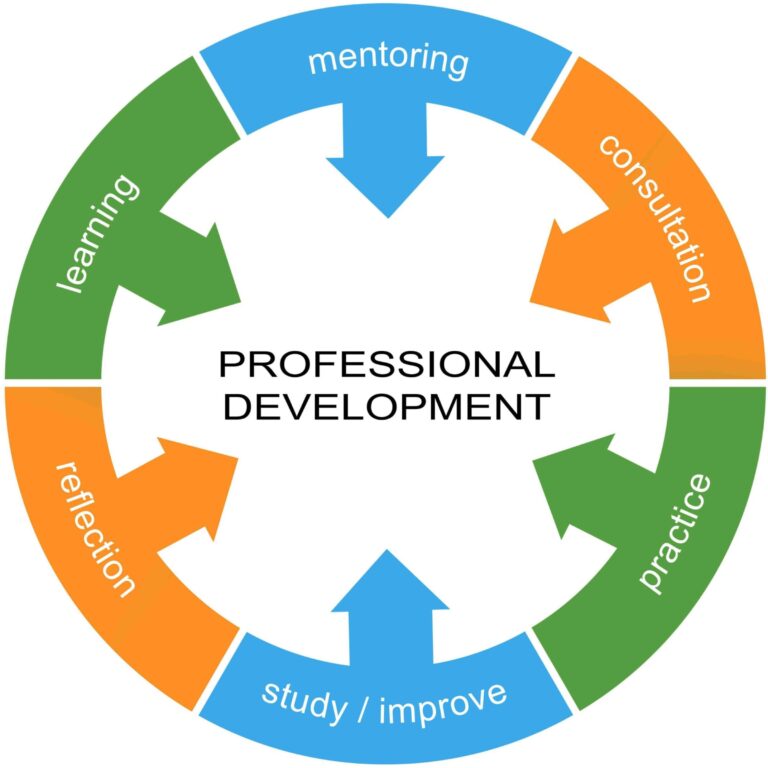In the ever-evolving field of education, continuous professional development (PD) is crucial for teachers to stay current with new teaching methods, educational technologies, and subject matter expertise. In the United States, professional development opportunities are plentiful, but so are the challenges that come with accessing and implementing them effectively. Here’s a closer look at the landscape of professional development for U.S. teachers, highlighting both the opportunities available and the obstacles they face.
The Importance of Professional Development
Professional development is essential for teachers to enhance their skills, expand their knowledge, and ultimately improve student outcomes. In a rapidly changing educational environment, PD allows teachers to stay up-to-date with the latest research, instructional strategies, and educational technologies. Moreover, effective PD can inspire teachers, boost their confidence, and reignite their passion for teaching.
Teacher Insight: Many teachers see professional development as a way to refine their teaching practice and learn new ways to engage their students. Whether it’s mastering a new technology tool, learning about the latest literacy strategies, or exploring methods to better support students with diverse learning needs, PD can be a game-changer in the classroom.
Types of Professional Development
In the U.S., teachers have access to a wide range of professional development opportunities. These can be categorized into several types:
-
Workshops and Seminars: Short-term, focused sessions on specific topics, often conducted by experts in the field.
-
Online Courses and Webinars: Flexible, self-paced learning options that allow teachers to explore topics of interest at their convenience.
-
Conferences: Larger gatherings where educators can network, attend sessions on various topics, and learn from leaders in the field.
-
Coaching and Mentorship: Ongoing, personalized support from experienced educators, often within the same school or district.
-
Graduate Courses and Certification Programs: More formal education opportunities that can lead to advanced degrees or certifications in specialized areas of teaching.
Teacher Insight: Teachers appreciate the variety of PD formats available, as it allows them to choose the ones that best fit their learning styles and schedules. Online courses, for example, have become increasingly popular due to their flexibility, especially for teachers who are balancing work and personal responsibilities.
Challenges in Accessing Professional Development
Despite the abundance of PD opportunities, teachers often face significant obstacles in accessing and benefiting from them.
-
Time Constraints: One of the biggest challenges is finding time for professional development. With heavy workloads and personal commitments, many teachers struggle to carve out time for PD activities, particularly those that require travel or extended periods away from the classroom.
-
Financial Barriers: Professional development can be costly, especially when it involves conferences, graduate courses, or specialized certifications. While some schools and districts provide funding for PD, many teachers must pay out of pocket, which can be a significant financial burden.
-
Quality and Relevance: Not all professional development is created equal. Teachers sometimes find that the PD offered is not relevant to their specific needs or is of low quality. This can lead to frustration and a sense that their time is being wasted.
-
Lack of Ongoing Support: Even when PD is effective, the lack of follow-up support can hinder the implementation of new strategies. Teachers need ongoing coaching and feedback to successfully integrate new skills into their teaching practice.
Teacher Insight: Many teachers express frustration with “one-size-fits-all” PD sessions that don’t address the unique challenges they face in their classrooms. Additionally, the lack of time and funding for PD is a common complaint, particularly in underfunded schools where resources are already stretched thin.
Successful PD Strategies
Despite the challenges, there are strategies that can make professional development more effective and accessible for teachers:
-
Job-Embedded PD: Integrating PD into the regular workday can help address time constraints. This might include collaborative planning sessions, peer observations, or in-school coaching.
-
Tailored PD Programs: Schools and districts that offer personalized PD options, allowing teachers to choose topics that are most relevant to their needs, tend to see higher levels of engagement and satisfaction.
-
Leveraging Technology: Online PD platforms, such as Edmodo and Coursera, offer flexible, high-quality learning opportunities that teachers can access anytime, anywhere.
-
Collaborative Learning Communities: Encouraging teachers to participate in professional learning communities (PLCs) can foster collaboration and provide ongoing support for implementing new strategies.
Teacher Insight: Teachers who have participated in job-embedded PD or PLCs often report that these approaches are more impactful than traditional workshops. The opportunity to collaborate with colleagues and receive immediate feedback helps them apply new concepts more effectively in their classrooms.
Conclusion
Professional development is a critical component of teacher growth and student success, but it is not without its challenges. In the U.S., teachers have access to a wealth of PD opportunities, ranging from online courses to in-person workshops. However, time constraints, financial barriers, and the quality of available PD can limit its effectiveness. By adopting more flexible, personalized, and supportive PD models, schools and districts can better equip teachers with the tools they need to thrive in an ever-changing educational landscape. For teachers, ongoing professional development is not just about improving their own skills—it’s about ensuring that their students receive the highest quality education possible.


